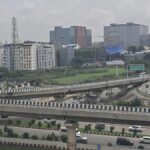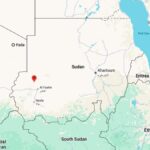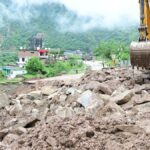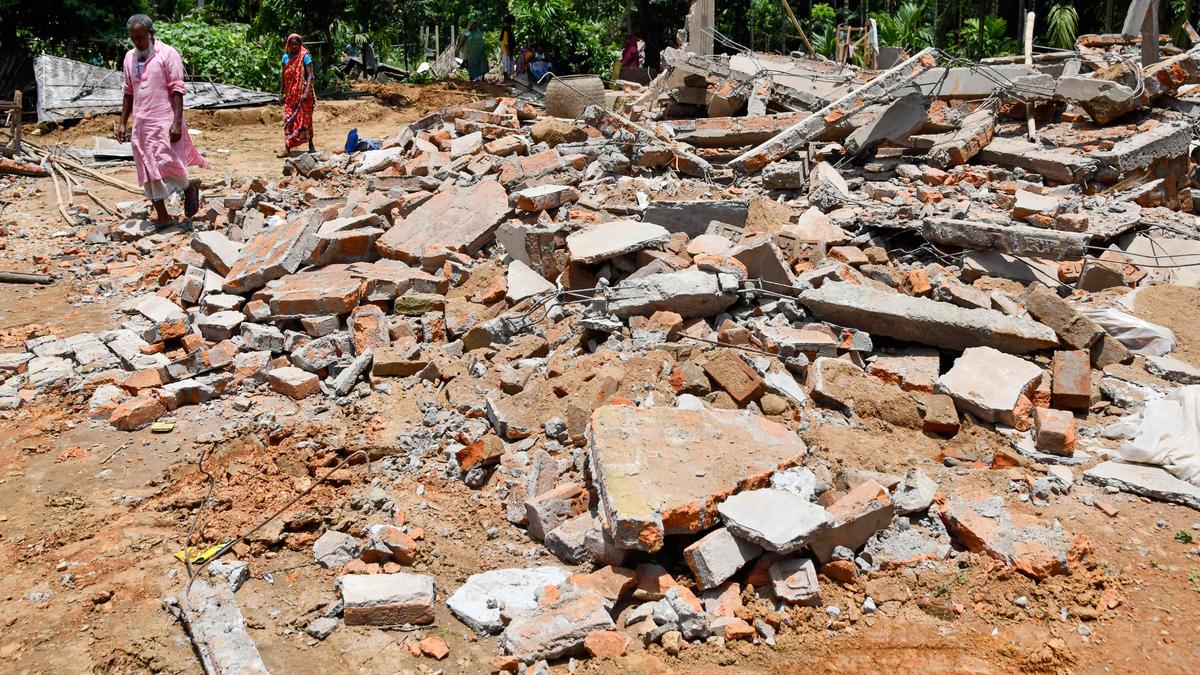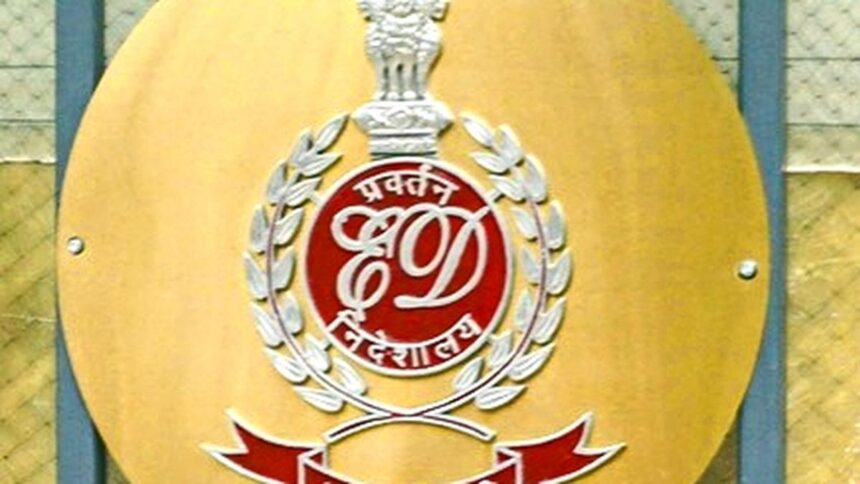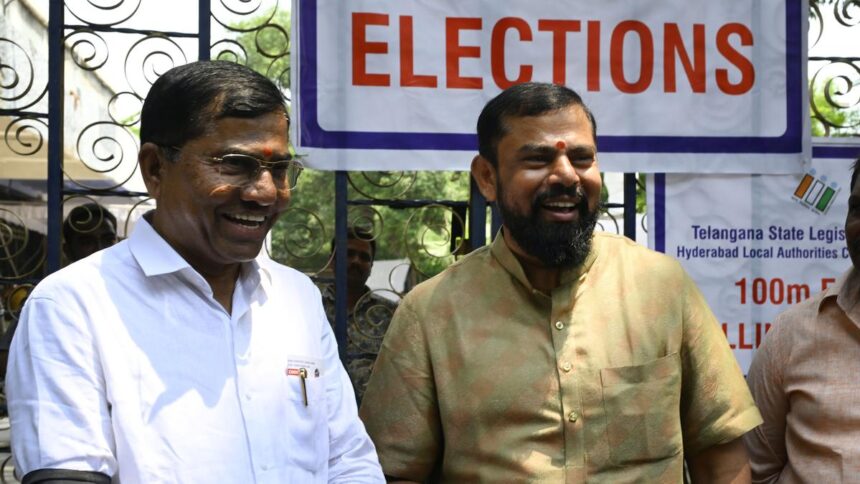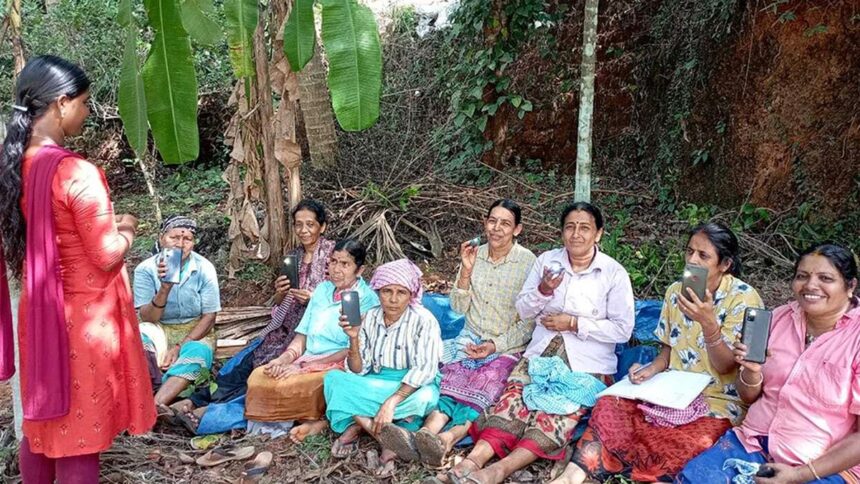Jiten Gohain is the head of one of 218 families evicted during a drive the authorities in Assam’s Lakhimpur district carried out on July 3 to reclaim 78 acres of Village Grazing Reserve (VGR) land across four locations.
On July 8, the district’s Sub-Divisional Land Advisory Committee approved the allotment of 1.5 kathas (4,320 sq. ft) of land each to 21 families evicted, in one of the fastest such exercises. Among them were 12 belonging to the Ahom community, which is seeking Scheduled Tribe status, to which Mr. Gohain belongs.
District Commissioner Pronab Jit Kakoty said the eviction drive was conducted following “due process”. He said the affected families, which failed to produce land ownership documents, were served notices on June 29.
“I had a larger plot from where we were evicted, but the government has at least provided some space,” Mr. Gohain said.
Abul Hasan Sheikh, one of some 200-odd Bengali-speaking Muslim families evicted from Lakhimpur, is not sure if the government would be equally “generous” to provide him an alternative plot. He is originally a resident of western Assam’s South Salmara-Mankachar district along the border with Bangladesh.
Chief Minister Himanta Biswa Sarma named him and at least a dozen others from faraway districts – most of them Muslim-majority – to underline the alleged “agenda of demographic invasion by strategically occupying lands in areas dominated by indigenous communities”.
“An analysis has revealed that the families evicted from Lakhimpur included 76 from Barpeta, 63 from Nagaon, seven from Goalpara, and two from South Salmara-Mankachar. Why should someone from South Salmara go to Lakhimpur instead of going to West Bengal, about 50 km away?” Mr. Sarma told reporters on Tuesday.
‘Voter list deletions’
The Chief Minister said more than 50,000 people have been evicted from “protected areas, wetlands, VGR and PGR (Professional Grazing Land), government khas (land owned by the government that has not been settled) and wasteland, and those belonging to satras (Vaishnav monasteries) and namghars (prayer halls)” over the past few weeks.
According to the State’s Revenue and Disaster Management Department, the Assam Land and Revenue Regulation of 1986, the Land Policy of 1989, and a 2011 Supreme Court judgment mandate protection of government and village common lands. It also cites the violation of the Assam Land Grabbing (Prohibition) Act of 2010 as a punishable offence.
After the BJP came to power in Assam in May 2016, the first eviction drive was carried out in three fringe villages of Kaziranga National Park and Tiger Reserve. Two persons, including a minor girl, were killed during the eviction based on a Gauhati High Court order in September 2016.
“Most of those evicted are listed as voters in places from where they came. We have asked the authorities from where they were evicted to delete their names from the electoral rolls to eliminate duplicate names,” Mr. Sarma said.
Citing the case of the 12 Ahom families, the All Assam Minority Students’ Union has demanded rehabilitation for the evicted Muslim families. It claimed many people had lands they were evicted from before these were declared as reserve forests.
The Opposition parties have criticised the eviction drive for disproportionately targeting the minority communities. “The Supreme Court and the National Human Rights Commission should take note of the eviction during the court holidays in Assam to target poor Muslims. The government must first provide adequate rehabilitation and only then undertake eviction,” All India United Democratic Front MLA Rafiqul Islam said.
“The BJP government has been projecting the evicted people as Bangladeshi. The government provided a compensation package of ₹14.72 crore to 332 families evicted from Kaziranga. People evicted [in 2021] for the Gorukhuti project [Darrang district] were compensated and given land in the Dalgaon area. Why is the government doing so if these people are Bangladeshi?” Congress leader and advocate Aman Wadud said.
Others pointed out that the Dhubri district administration has asked 1,400 families displaced from Chapar town, reportedly to make space for a thermal power plant by the Adani Group, to relocate to a sandbar in the middle of the Brahmaputra river.
‘Politics of polarisation’
“The eviction is being carried out for two reasons. Firstly, they want to clear land for corporate houses. Secondly, evicting minorities paves the way for the politics of polarisation… so that the Hindu voters back the BJP, especially in eastern Assam, where it is facing challenges,” Raijor Dal MLA Akhil Gogoi said.
Lurinjyoti Gogoi, the chief of Assam Jatiya Parishad (AJP), said eviction drives are a form of the tried-and-tested ploy of weaponising the “Bangladeshi issue” before the poll.
The Assembly poll in Assam is due by May 2026.
“The Chief Minister claims he is doing everything for the indigenous people. In reality, more tribal families have been evicted than the Muslims. In Karbi Anglong, 20,000 Adivasi, Karbi, and Naga families have been evicted to hand over 18,000 bighas of land to the Reliance Group,” the AJP leader claimed. In Assam, one bigha is equivalent to 14,400 sq. ft.
He also cited 9,000 bighas of land “to be handed over to the Adani Group” in Dima Hasao district, 45 bighas “taken away” from the Adivasis for a hotel project near Kaziranga, and 75 bighas for a Patanjali project in the Golaghat district. “It is evident why the government is on a land acquisition spree. Of the 49,000 bighas cleared, only 6,000 bighas were under the occupation of the religious minorities,” the AJP leader said.
Published – July 16, 2025 01:28 am IST



